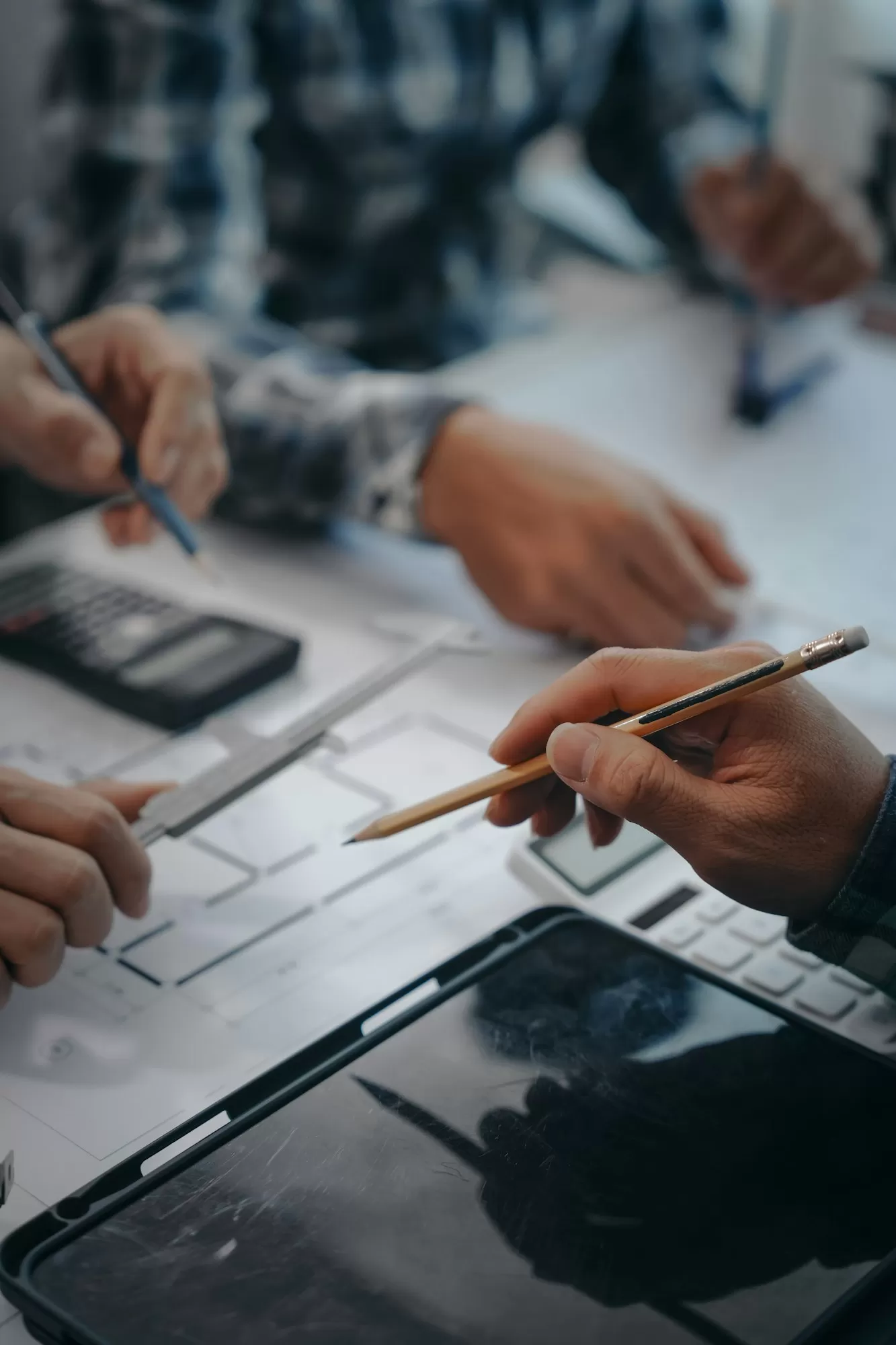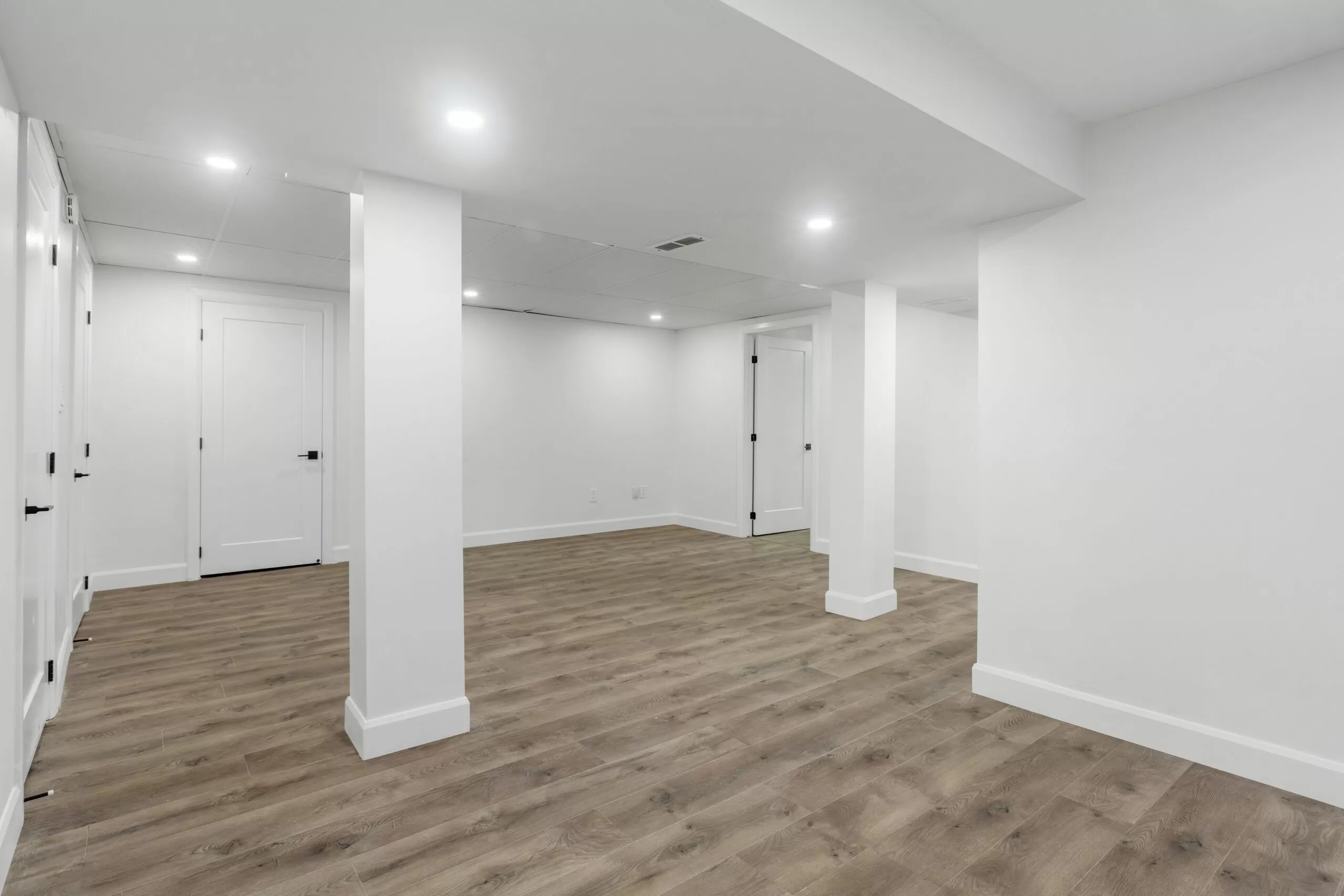Steel has become an integral part of modern infrastructure and construction. From bridges to skyscrapers, Steel provides the underlying support and structure for many of humanity’s most outstanding architectural achievements. As demands for advanced buildings and infrastructure continue to grow, so does steelwork manufacturers’ vital role.
These companies are pushing the boundaries of what can be built by producing incredibly versatile, high-quality steel products. By adopting sustainable practices and innovating new solutions, steel manufacturers prove their work is critical to building the future.
The Vital Role of Steel in Modern Construction
Steel is a fundamental aspect of construction across the world. Its unique properties, such as high tensile strength, durability, and workability, allow it to be used for everything from residential buildings to massive stadiums.
Steel offers unparalleled performance characteristics at a competitive price point, making it the predominant choice of material for builders and architects. Modern construction relies heavily on Steel for beams, trusses, reinforcement bars, and exterior cladding. As contemporary buildings become larger and more complex, the role of steelwork grows increasingly vital.
The Growing Demand for Steel Structures
Urbanization and population growth are driving demands for new infrastructure worldwide. Constructing modern buildings, bridges, railways, and power plants requires significant Steel. According to industry forecasts, 1.8 billion tons of Steel will be required for construction globally each year by 2025.
Developing nations also witness an acceleration in steel demand as they race to build new cities and transportation networks. Steelwork manufacturers are responding by increasing production capabilities through new mills and foundries. The future of construction is inexorably tied to having sufficient access to essential steel resources.
The Evolution of Steel Manufacturing
Humans have produced steel forms for thousands of years, dating back to the Iron Age—early methods involving furnaces and hammering eventually evolved into large foundries explicitly designed for steel production. The Bessemer process brought about mass production of affordable Steel in the 19th century.
Today, mills use advanced techniques, allowing greater control and specialization in steelmaking. Computerized systems monitor everything—from temperature and chemical composition to quality control. Steel manufacturers can now create innovative products engineered to overcome unique challenges.
Historical Perspective: From Iron to Steel
For centuries, iron was the metal of choice for early civilizations. However, large-scale steel production did not emerge until the mid-19th century with the advent of new industrial processes. Steel was coveted for its hardness, malleability, and resistance to corrosion.
Pioneering steelmakers like Andrew Carnegie helped transform Steel from a niche material into a significant commodity. The early 20th century saw massive growth in steel demand and the rise of integrated steel mills and foundries. Today, annual global steel production exceeds 1.8 billion metric tons as it remains an indispensable material worldwide.
Technological Advancements in Steel Production
Steel manufacturing has continually evolved with the development of new technologies and techniques. In early mills, the production process was crude and labour-intensive. Modern methods have automated and streamlined every operation step using computers and clever engineering.
Smart sensors precisely monitor chemical and thermal activity, allowing for adjustments in real-time. Automated vehicles transport and handle materials between processes. These innovations have led to greater efficiency, lower costs, improved quality control and new capabilities in steel manufacturing.
Steelwork Manufacturer’s Contribution to Sustainability

With growing awareness of environmental issues, steel producers have implemented more sustainable practices and technologies. Scrap metal recycling now accounts for over half of raw material input for steel mills, reducing waste. Manufacturers are utilizing cleaner electric arc furnaces and optimizing production to lower energy usage.
New coatings increase Steel’s durability and longevity in products. Steel fabrication generates far less site waste than concrete construction. Through these initiatives, steelmakers are reducing their environmental footprint and helping customers build greener, more durable structures.
Sustainable Practices in Steel Manufacturing
Steel manufacturers understand their pivotal role in promoting sustainability and have taken steps to lead the charge. Most mills use a high percentage of recycled scrap metal rather than virgin ore, saving on waste and mining impacts.
Water conservation, air emission controls, and responsible waste disposal policies are commonly adopted. Some companies install solar or wind farms to provide clean power to their facilities. By demonstrating that environmental responsibility and steelmaking can coexist, manufacturers are setting the bar for the future of sustainable industry.
Reducing Carbon Footprint: Eco-Friendly Steelwork
Steel producers are working diligently to lower greenhouse gas emissions generated from manufacturing. Strategies include increasing energy efficiency in furnaces, utilizing recycled scrap metal and integrating renewable energy sources like solar and wind.
Some mills are experimenting with breakthrough technologies that electrolyze iron ore rather than smelt it with coke. These innovative solutions promise to dramatically reduce carbon footprints across the steel industry as sustainable production becomes the new normal in the coming years.
Innovations in Steelwork Design
New technologies enable steel manufacturers to create innovative products that reshape what’s possible in modern design and construction. Advancements like HiAm steel sheets increase strength using less material for lighter, sustainable structures.
Thermal optimization minimizes conductivity issues and moisture accumulation risks. Galvanized coatings prevent corrosion in steelwork exposed to weathering. Manufacturers work closely with architects and engineers, helping them realize groundbreaking visions for the future using these new steel solutions.
Architectural Advancements in Steel Structures
Steelwork continues to transform the limits of building design. Lighter-weight trusses and reinforced beams allow for greater spans, open interiors, and towering heights. Ductility in steel framing resists seismic forces, allowing architecturally daring buildings in earthquake-prone areas.
Corrosion-resistant grades enable steel construction in harsh oceanfront sites. Sophisticated modelling and fabrication methods empower intricate geometries and forms once impossible with other materials. Steel facilitates aesthetically stunning, highly functional and environmentally responsible architecture.
Integration of Steelwork in Contemporary Building Projects
Modern construction projects rely on an integrated approach utilizing steelwork, concrete, and glass to achieve innovative designs. Steel reinforcing bars and mesh strengthen poured concrete while providing flexibility.
Pre-fabricated steel framing is joined with modular concrete slabs to create floors and walls. Exterior curtain walls of glass are suspended outside steel frames, maximizing views and natural light. Sophisticated 3D modelling assists with complex detailing. This symbiotic use of materials allows for streamlined construction, economic benefits, sustainability and breathtaking architecture.
Quality Control in Steel Production

Steel manufacturers adhere to strict protocols throughout production to ensure consistent high quality. Raw materials are carefully assayed and blended using computer formulas. Temperature and chemical composition are closely monitored with sensors during smelting, moulding and rolling.
Automated testing machines analyze finished steel products, verifying hardness, flexibility, toughness and other metrics. Trained technicians oversee operations and perform visual inspections looking for defects. Companies deliver reliably excellent Steel to clients thanks to this diligent control and analysis.
Ensuring High-Quality Steel Products
Achieving exceptional quality starts with control over steelmaking inputs. Reputable manufacturers use high-grade iron ore, scrap metal and proprietary chemical additives. Temperature and composition are regulated throughout smelting for optimal consistency.
After shaping, each piece undergoes strength, hardness and defect testing. A low error tolerance and robust process oversight ensure outputs uniformly meet the most rigorous industry standards. These practices enable manufacturers to provide their customers with top-tier steel products for critical construction and infrastructure applications.
Adherence to Industry Standards and Regulations
Steelwork manufacturers must comply with government and industry standards regulating quality, safety and sustainability. Trade organizations like the American Institute of Steel Construction and the American Society for Testing and Materials develop specifications relating to chemical composition, mechanical properties and product testing that steelmakers must satisfy.
Worksite and environmental regulations also govern factory operations. Keeping up certification and adapting to new mandates requires dedication but ensures customers receive Steel that meets or exceeds all benchmarks.
Customization and Versatility in Steelwork
One of Steel’s greatest attributes is its versatility, which allows manufacturers to tailor products to projects’ specific needs. Mills can tweak the carbon content and alloys to optimize qualities like strength, hardness and corrosion resistance for different applications.
Stock material comes in various sizes and geometries or can be rolled and fabricated for one-off components. With the correct steel grade and custom production methods, manufacturers can supply bespoke solutions to satisfy each customer’s unique requirements.
Tailoring Steel Solutions to Project Requirements
An expert manufacturer works closely with clients to understand application challenges and deliver tailored steel products that solve them. It may recommend high corrosion-resistant alloys and galvanizing for a coastal bridge to withstand saltwater exposure.
A skyscraper may require heat-treated high-carbon steel plates to bear immense loads. Mills utilize advanced modelling, expert metallurgy and precision fabrication to provide custom steel geometries, grades and treatments that address each project’s demands. This consultative approach ensures clients get cost-effective steelwork optimized for their needs.
Applications of Steelwork Across Various Industries
Steel is applied across every industry due to its versatility, strength and cost-effectiveness. It is used for structural framing, reinforced concrete, bridge cabling and cladding in construction. Manufacturing relies on Steel for production equipment, warehouses and infrastructure.
The transportation sector utilizes Steel for rails, vehicles, ships and aircraft. Energy projects employ Steel for generation, electrical transmission towers and pipelines. No matter the industry, steelmakers deliver vital products that form the backbone of our infrastructure.
The Role of Steelwork in Infrastructure Development
Modern societies depend on robust infrastructure, from transportation networks to energy distribution systems, underpinned by steel construction. High-strength Steel allows for suspension bridges with unprecedented lengths. Ductile steel reinforcement enables torque-resisting transmission towers.
Offshore rigs and pipelines rely on corrosion-resistant steel alloys to withstand ocean environments. Rail networks and cargo ships are built almost entirely from various steel grades and products. Steel is the critical material that makes it possible when advancing infrastructure development worldwide, whether above ground or underneath oceans.
Bridges and Highways: Steel’s Critical Contribution
Ground transport arteries like highways, railways and pedestrian bridges depend on steelwork for longevity and safety. High-tensile steel cables provide post-tensioning reinforcement to resist vibrations and immense loads in bridge decks.
Strong yet malleable steel plate girders form structural skeletons, allowing complex segmented fabrication. Re-bar integration adds strength and earthquake resilience to concrete overpasses and supports. Steel’s importance for constructing durable, long-lasting bridges and highways that stand up to heavy use cannot be overstated.
Steelwork in Skyscrapers and Urban Development
Soaring skyscrapers dominating modern cityscapes could not reach such heights without advanced steelwork. Framing systems fabricated from laser-cut, high-carbon steel members enable towers up to 100 stories.
Lightweight floor trusses allow for column-free interiors and reduced foundation loads. Steel reinforcement boosts the strength and elasticity of poured concrete slabs. By making safe, strong, and spacious high-rises possible, innovative steelwork continues to transform urban development.
Challenges and Solutions in Steel Manufacturing
Despite its dominance, steelmaking faces substantial challenges, from environmental regulations to volatile energy costs. Manufacturers are overcoming these hurdles by adopting sustainable practices, improving efficiency, and innovating new technologies.
Many mills use recycled scrap metal and have reduced water usage and emissions. Automated processes optimize productivity. Emerging technologies promise to revolutionize steel production in the coming decades as manufacturers prove their resilience.
Overcoming Environmental Challenges
Steelmakers aim to minimize their environmental impact with measures targeting energy usage, emissions and waste. Electric arc furnaces utilizing recycled scrap metal have a lower carbon footprint. Emissions scrubbing systems reduce particulates and gases.
Nearly all process water is captured, cleaned and reused. Scrap metal is reintegrated back into production. And slag waste is repurposed for construction applications. These solutions demonstrate that steel production can be made significantly cleaner and greener.
Addressing the Issue of Corrosion
Manufacturers combat Steel’s tendency to rust through specialized production methods and protective coatings. Adding alloys like chromium during smelting boosts inherent corrosion resistance. Thermal optimization removes moisture exposure risks.
Post-production treatments such as galvanizing and zinc plating inhibit rust formation. Weathering steel grades form an oxidation patina that resists corrosion. Modern Steel is more durable than ever due to material science and manufacturing advances.
Steelwork Manufacturer’s Commitment to Safety
Maintaining rigorous safety standards is a top priority across the steel industry. Workers wear flame-retardant clothing, hard hats, respirators and earplugs to minimize risks from heat, sparks and loud noise common in mills and foundries.
Strict protocols govern equipment operation and molten metal handling. Regular training emphasizes safety responsibilities for all employees. These measures help protect workers and the local community from potential dangers inherent in steel manufacturing.
Ensuring Safe Working Conditions
Steelmaking entails inherent risks that manufacturers mitigate through comprehensive safety programs. Regular personnel training focuses on hazard awareness and accident prevention. Protective equipment like metatarsals and fire-retardant gloves help shield workers—area monitoring and ventilation control air quality.
Emergency response teams are prepared for any dangerous situations. Strict procedures govern potentially hazardous processes. These precautions demonstrate how steel companies prioritize safety for their workforce.
The Importance of Steelwork in Structural Safety
Proper regulation and inspection of steelwork help ensure buildings and infrastructure remain structurally sound over decades of use. Codes govern steel grades, joining methods and load testing for industry applications. Engineers review designs and perform stress analysis.
Certifications verify manufacturer qualifications. Installers examine joint welds and attachment integrity. Periodic inspections monitor potential cracks or failures over time. Oversight throughout the supply chain minimizes defects and reinforces Steel’s ability to provide long-term structural safety.
Economic Impact of Steel Manufacturing

Steelmaking provides extensive benefits beyond the products, including job creation, economic growth and infrastructure development. A single facility can employ several thousand skilled workers. Suppliers of raw materials, equipment and services depend on steel mills for business.
By generating and circulating capital, the steel industry bolsters local communities. The affordable products made help construct the buildings, roads, railroads and utilities supporting national economies. Global steel manufacturing will continue fueling prosperity for generations to come.
Job Creation and Economic Growth
Steel production supports millions of jobs across its supply chain, from raw material providers to finished product fabricators. A typical mill requires a small city’s worth of specialized workers to mine ore, oversee smelting, shape steel and handle logistics.
This leads to job creation even in underdeveloped regions. Steel manufactured goods further expand employment opportunities during end use. Robust steelmaker activity translates directly to greater community prosperity and steady economic growth.
Steel Industry’s Contribution to National Economies
Steel is a cornerstone material for infrastructure and construction across nations. An ample domestic supply of high-quality Steel allows vital upgrades to transportation, utilities, buildings and energy systems that keep the economy humming.
International steel exports bring in revenue, while steel imports provide affordable materials to manufacturers—policies enabling competitive and sustainable domestic steel production support national infrastructure goals and economic development.
The Future of Steelwork Manufacturing
Global steel demand will rise as developing nations modernize and advanced economies maintain ageing infrastructure. Manufacturers are adopting revolutionary technologies like carbon capture, intelligent sensors and robotics to meet these needs.
With intelligent factories, sustainable processes and advanced materials, steel companies will supply the solutions taking society into a new high-tech era.
Advancements in Materials and Processes
Steelmakers are pioneering more robust and flexible alloys, leveraging innovative production methods. Nano-structured steel grades boast exceptional strength-to-weight ratios. Quenching and tempering create rugged martensitic steel ideal for tools and engines.
Twin casting produces complex slabs with two distinct stainless steel faces. These metallurgical and processing breakthroughs grant Steel even more advantageous properties and applications.
Role of Automation and Robotics in Steel Production
Intelligent automation is transforming efficiency, precision and safety throughout the steel industry. Programmable furnaces optimize melting parameters on the fly. Coordinated robots handle dangerous or laborious tasks like casting and slag removal.
Machine learning algorithms forecast maintenance needs before breakdowns. Sensors enable constant monitoring and micro-adjustments. By integrating and coordinating cutting-edge technologies, steel mills are advancing toward fully automated, highly efficient, intelligent factories.
Conclusion
Given its peerless versatility, strength and value, Steel’s importance for society will never fade. Looking ahead, steel manufacturers will continue pioneering new production methods, sustainable processes and high-tech materials.
With smart factories and a skilled workforce, they are prepared to provide the advanced steel solutions that will build the innovative infrastructure of the future. The world still runs on Steel. And with steelmakers leading the charge, the future will indeed be shaped by Steel.
FAQs
Who is the largest steel producer in Canada?
The largest steel producer in Canada is ArcelorMittal Dofasco, based in Hamilton, Ontario.
Are there any steel mills in Canada?
Yes, there are several steel mills in Canada, including those operated by ArcelorMittal Dofasco, Essar Steel Algoma, and Stelco.
How many steel manufacturers are in Canada?
There are several steel manufacturers in Canada, with the major ones being ArcelorMittal Dofasco, Essar Steel Algoma, Stelco, and Evraz Inc. NA.
What is the famous steel company in Canada?
One of the most famous steel companies in Canada is ArcelorMittal Dofasco, known for its significant presence in the Canadian steel industry.
What are the big steel companies in Canada?
Some of the big steel companies in Canada include ArcelorMittal Dofasco, Essar Steel Algoma, Stelco, and Evraz Inc. NA, all of which play a significant role in the Canadian steel manufacturing sector.
















